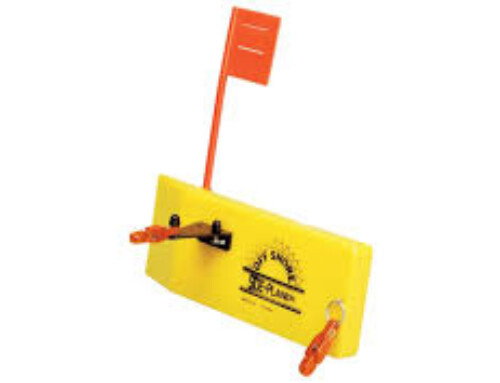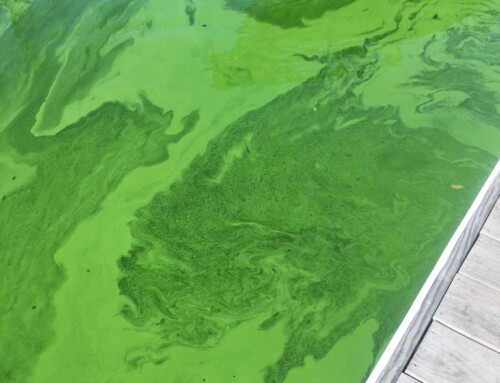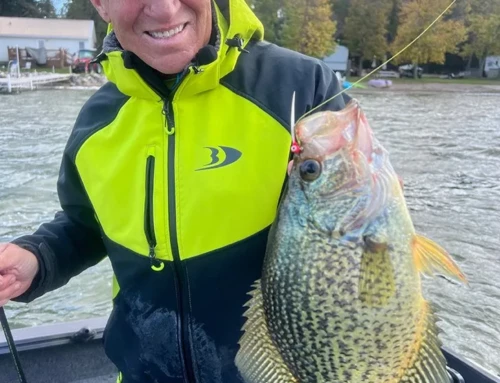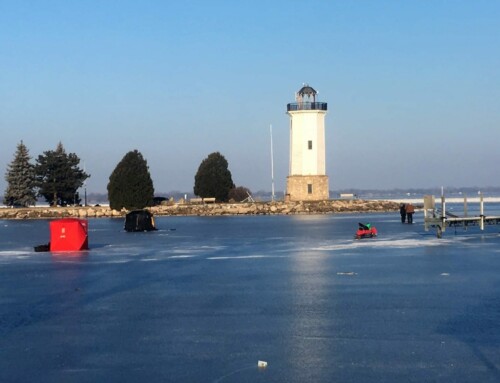By Mark Schram, myfishingpartner.com
The Lake Winnebago region has been in a variable weather pattern for nearly two months now, with constant rain and slightly above average temperatures this week. Overall, anglers have had to select windows of opportunity to get on the water.
The warmer temperatures have resulted in a large algae bloom in portions of Lake Winnebago. The pea green algae are thick on the surface, especially on calm days. Algae is formed when too many nutrients (particularly phosphorus and nitrogen) are in the water. Traditional reasoning is the extra nutrients are common from fertilizers (both farm and residential) which have been washed off into the watershed. To date, no harmful blue green algae has been reported in 2017 on the Winnebago system.
Water temperatures on Lake Winnebago have fluctuated daily to a minor degree, but have remained steady over the past 10 days, typically in the mid to upper 70’s. Lake Poygan has been running a few ticks higher, around 80 degrees. Water clarity is stained, with varying degrees of visibility depending on location. 
Cruising around Lake Winnebago this week, the electronics were lit up with large schools of fish across selected areas of the main lake. There has been a major pattern change with fish no longer largely scattered throughout the “mud”, but now residing into defined schools. As I mentioned last week, bait fish schools are less common and have been largely consumed by predator fish. The largest schools of predator fish which I found were located just north of Columbia Park (East Shore), northeast of Garlic Island, in front of the Fox River’s mouth and another school just south of Long Point.
Given the inconsistent weather, anglers have been limited in opportunities to fish, and overall traffic has been light on Lake Winnebago most days. Results have been mixed. Additionally, many anglers have moved their attentions to Lake Michigan and the Bay of Green Bay.
On the southern portion of Lake Winnebago, in the Fond du Lac area, walleyes and perch have been active. Many of the walleyes have been residing in the weed beds, especially in the 6-9-foot ranges. However, the size of many of these walleyes are running on the smaller size (11-14-inch). The perch are in deeper areas, typically from 11-14 feet of water.
Near Columbia Park in Pipe, WI, large schools of fish are being observed. Recorded catches from this school are average sized walleyes, white bass and sheepshead. Look to the 18-foot depths to locate the school(s). Let the electronics tell you where the fish are located each day within the water column. All schools are being impacted by thunder and lightning plus wind this week, and have been changing depth daily. Look deep after a night of storms, especially with crawler harnesses.
Another mud school is near Garlic Island. There are plenty of the “right kind of” marks with this school. However, I threw the tackle box at them, and they had lock jaw. 
Shallower reefs are also holding walleyes on the reef edges, toward the deepest surrounding water. This was a consistent story-line on Long Point, Third Reef, Horseshoe Reef and Asylum Point. Pitched crawlers on a light jig was the best tactic or Salmo hornets #4 pulled behind Off Shore Boards at 25 feet along the edge of the reefs.
White bass have become more numerous and more active. Running your trolling speeds at 2.5 to 3.0 mph will produce more white bass, as they tend to be aggressive chasers when hungry. Minnow shaped baits were outperforming shad shaped baits. Blue was a key color.
Perch fishing has slowed along the Fisherman’s Road complex and the Wendt’s/Black Wolf area on the west shore. Hellgrammites remain the key attractant.
Essentially all major walleye tournaments have concluded for the next six weeks on Lake Winnebago. Have a great week on the water! And look to the sky as many unique aircraft will be flying overhead during the Experimental Aircraft Association (EAA) annual mega event this week held in Oshkosh, WI.
Just a quick note: Wardens, Sheriffs and the Coast Guard have been very active on the system with routine boating checks. Ultimately, they are there for your safety. During a recent safety check, Wardens were looking at kept fish, life preserver counts (including a throw-able), valid fishing license, transported water in the livewell, and a fire extinguisher on board the boat. It is a good time to double check your boat for compliance before a routine stop. I did pass!
Email: [email protected].
Facebook: https://www.facebook.com/myfishingpartner/
YouTube: https://www.youtube.com/channel/UCda5_YvomIwQLzTBXJxEzaw?view_as=subscriber
Pinterest: https://www.pinterest.com/markschram33/
Instagram: https://www.instagram.com/myfishingpartner/?hl=en and https://www.instagram.com/my_fishing_partner/?hl=en
Walleye Nets: www.Walleyenets.com
Twitter: @fishingpartner





